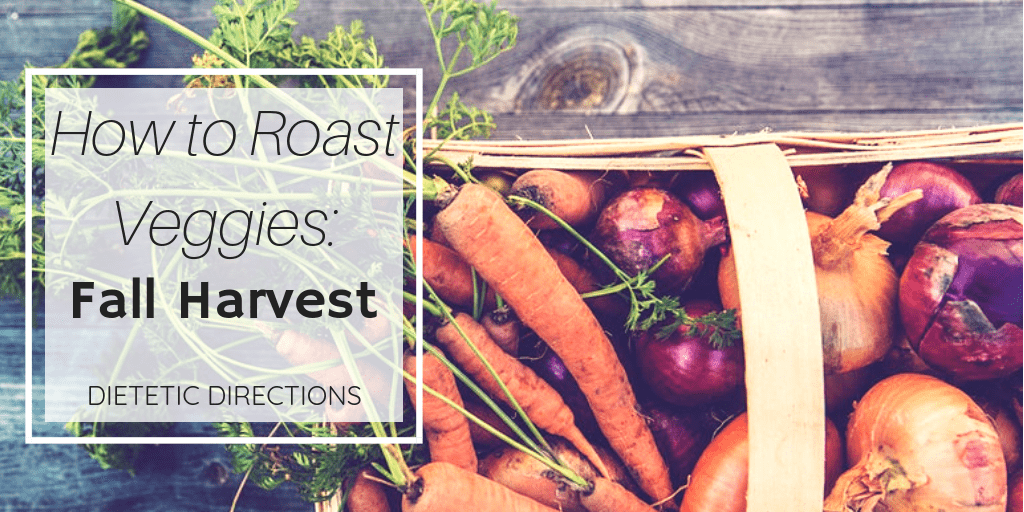
How to Make Roasted Fall Veggies
With Fall season upon us, there’s abundant fresh produce in the Farmers’ Markets and grocery stores! Knowing what to do with so much seasonal food can be a challenge. Last week, I was on CTV Kitchener chatting about how to do make roasted fall veggies to boost your intake. This is important because according to Statistics Canada, less than half of Canadians consume the recommended amount of fruits and vegetables daily. If you haven’t tried roasting, I hope this blog will inspire you to try 3 simple veggie-roasting strategies!
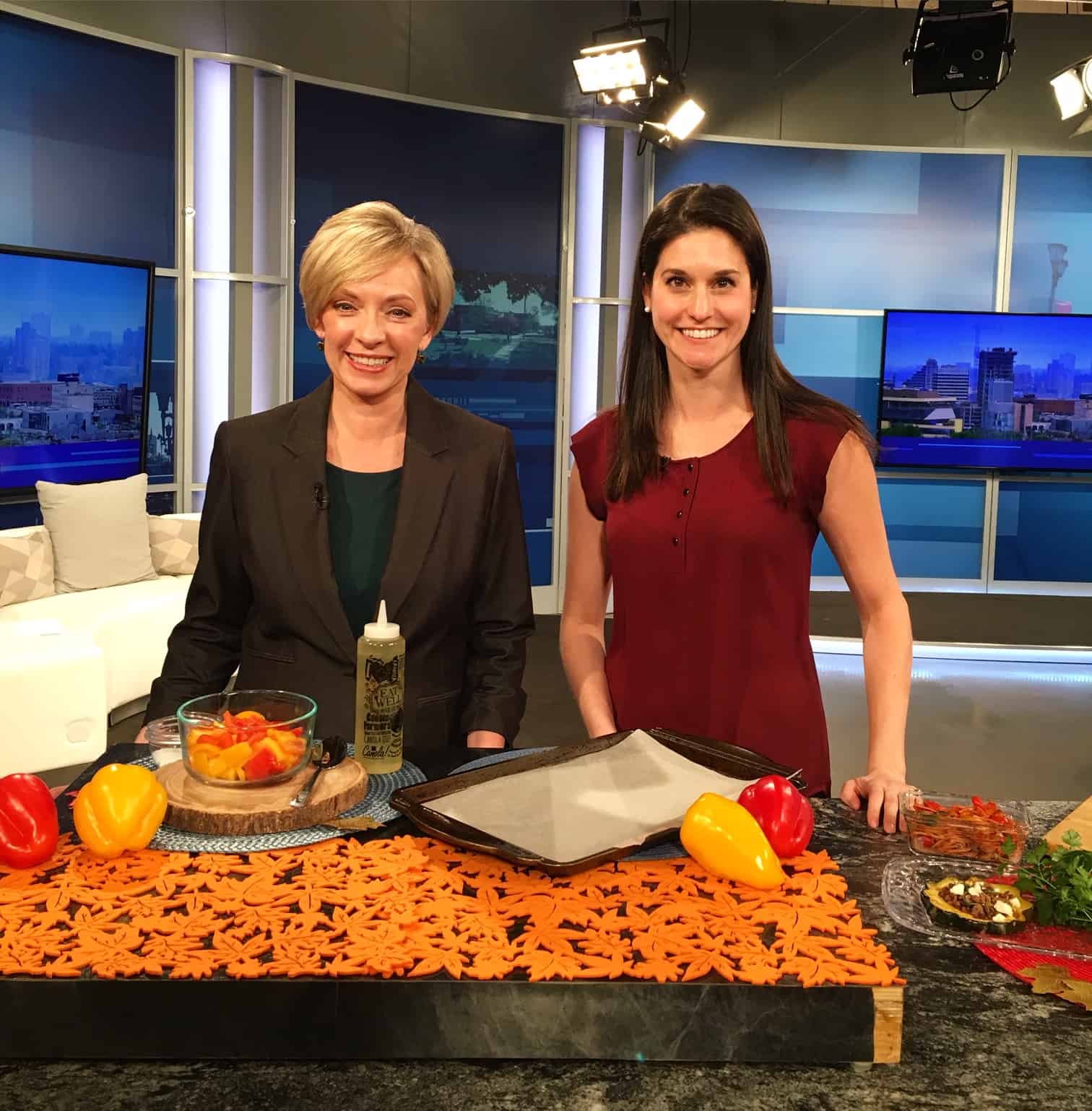
Andrea’s CTV Kitchener segment for Roasted Fall Veggies
What Does ‘Roasting’ Mean:
Roasting simply means to cook in an oven using dry heat. Roasting browns the surface of food, which leads to new caramelized flavours and intensified aromas! You can roast any vegetable and it changes the flavour so even picky eaters or non-veggie-loving people will find veggies taste savoury and sweet.
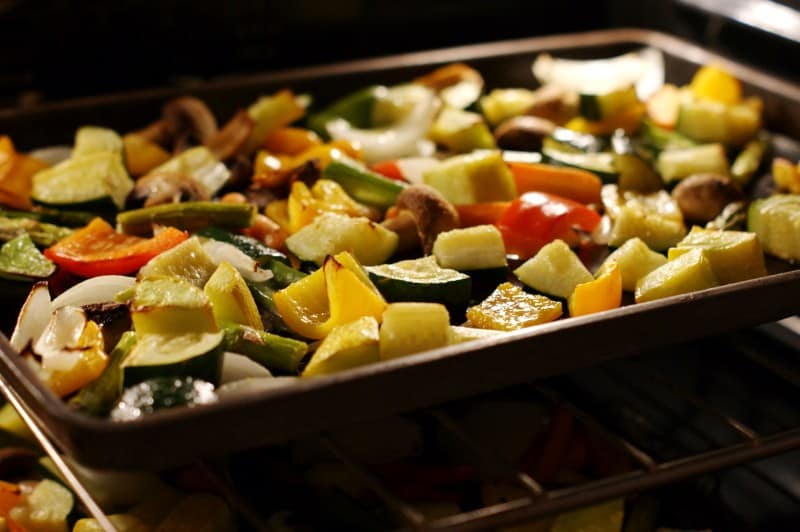
Veggie-Roasting Tip #1: Explore Variety!
Think outside the root vegetables like sweet potatoes for roasting. Every veggie can be roasted!
Examples include: Green onions, eggplant, zucchini, bell peppers, garlic, squash, cherry tomatoes, celery, kale, mushrooms, butternut squash, Brussels sprouts, carrots, etc.
Toss whatever veggies you like (or have on hand) onto a baking sheet and add those caramelized gems to your meals. More on this below.
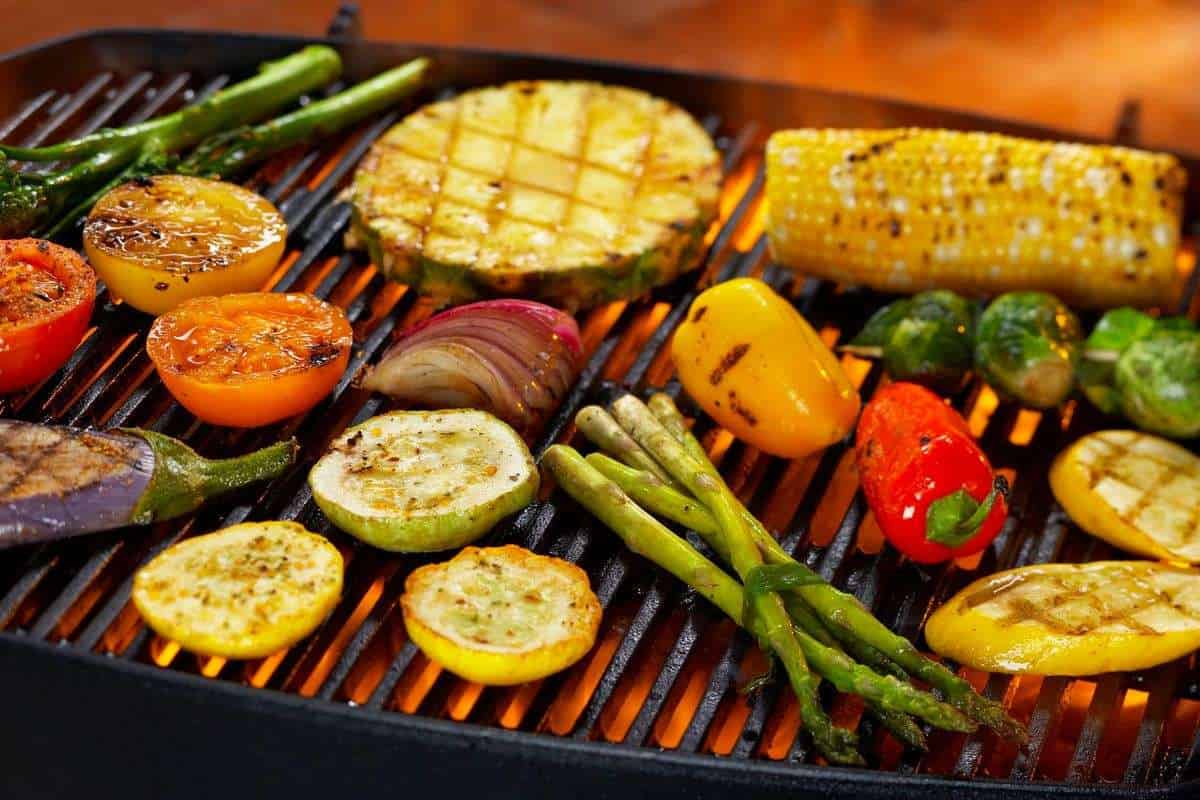
One of my absolute favourite veggies to roast is cauliflower. Cauliflower is part of the cabbage family and popular during Fall Harvest because it’s cold-tolerant. I’m not a fan of eating it raw, but roasting changes the flavour profile making it sweet and savoury. This modest veggie is also exceptionally high in vitamin C (85% of daily requirement in 1 cup). Vitamin C is an antioxidant, important in immune functioning, skin, bones and connective tissue.
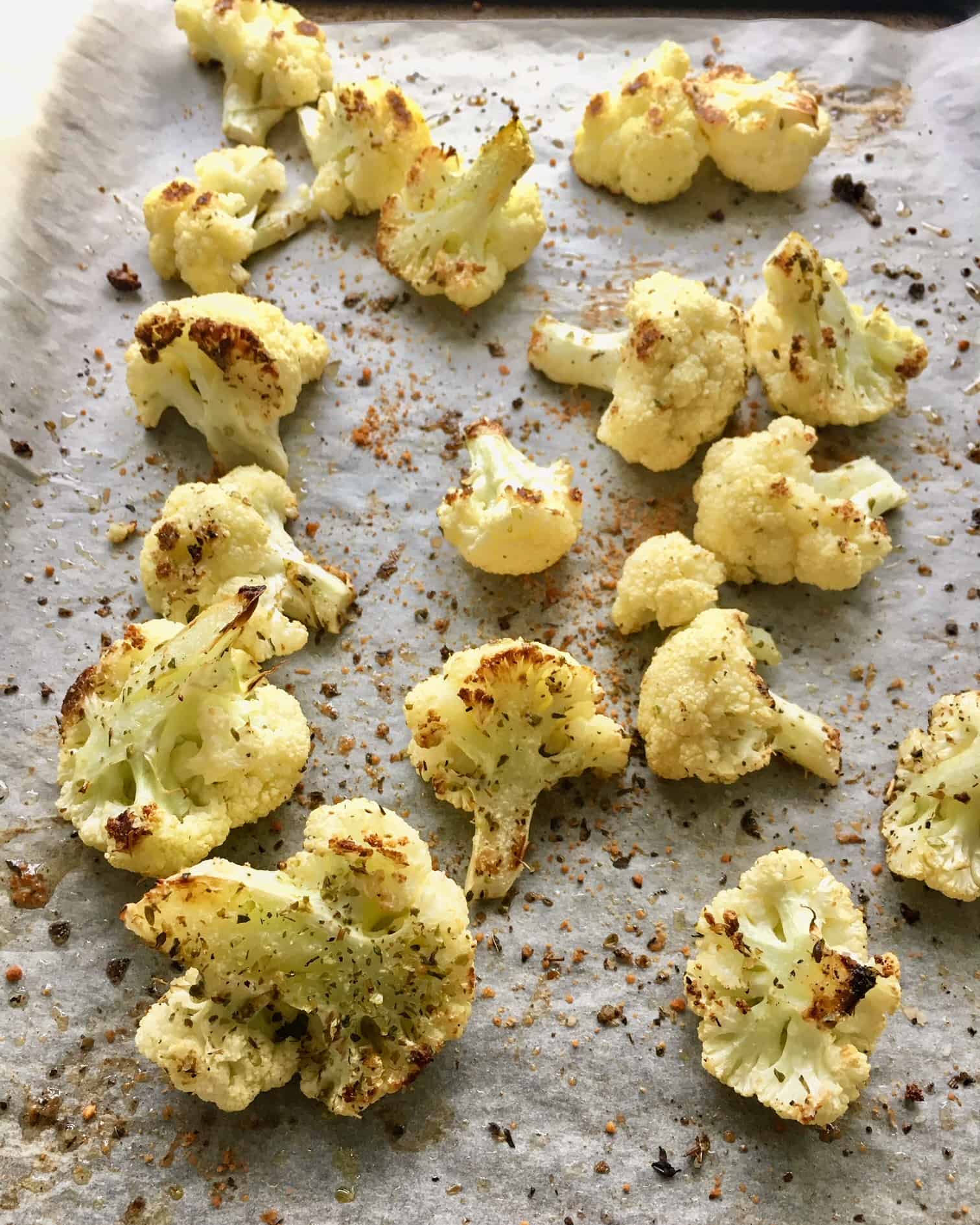
Roasted Cauliflower with Parmesan & Oregano Recipe
Beets are another sweet veggie to roast. You don’t even have to peel them, which is a messy job. Instead, give the beet surface a good scrub with water, and wrap individually and loosely in aluminum foil. Drizzle canola oil, which is high in monounsaturated fats and good for lowering cholesterol. Sprinkle salt and put into 425F oven for about 40 to 60 minutes (depending on beet size). Cook until tender to pierce with a sharp knife. Let beets cool and you can easily peel the skin off with a pairing knife. In Ontario, you can find beets in season until March/April.
#Beets can be roasted with the skin on! This makes a messy job much easier! #dietitian #cook #nutrition Share on XLastly, this Fall, don’t overlook squash when exploring the bounty of veggies to roast! There are many different types of squash. See more here. Squash has over 400% of daily vitamin A; important for eyes and skin. With squash, you also do not have to peel the veggie before popping it in the oven after it’s cut in half and seeds removed.
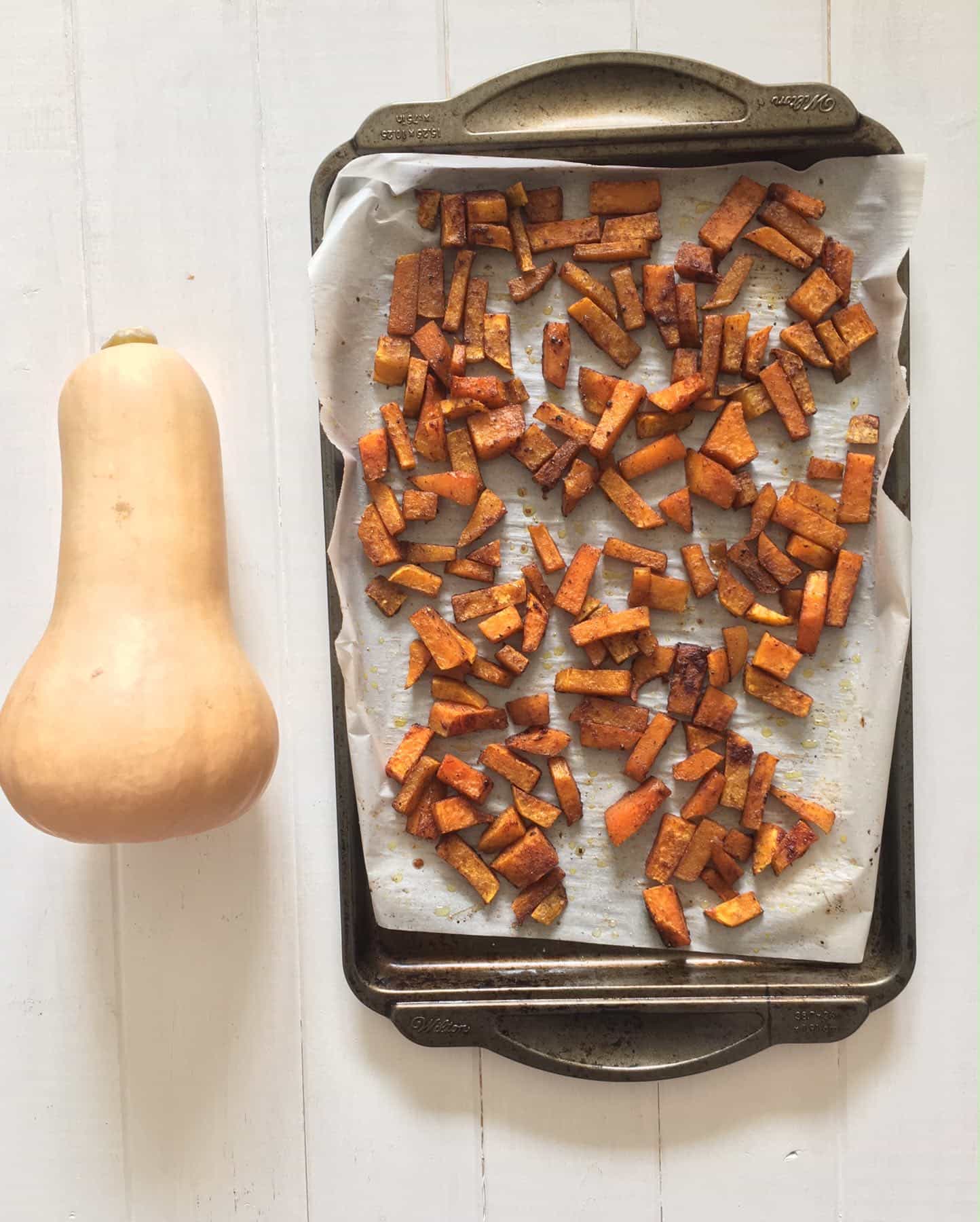
Click here to find veggies in season in Ontario this Fall.
Veggie-Roasting Tip #2: How to Roast Veg!
To roast veggies, first, cut in uniform or bite-sized pieces so they cook at same rate. The smaller the size, the quicker the cooking time. I generally go for bite size or chunks. A time-saving tip is to cut veggies in advance for faster meal assembly.

After veggies are cut, coat them with oil so they look glossy. The oil helps them cook evenly and holds in flavour. About a tablespoon or two of oil should be sufficient depending how many veggies you’re roasting. Whenever roasting, or cooking at high temperatures, choose an oil with a high smoke point. This is the temperature where the oil starts to burn and smoke which can destroys the nutrients in oil. I use canola for roasting because it has a very high smoke point of 468 F.
When #roasting, choose an oil with a high smoke point. When oil starts to burn and smoke it destroys the nutrients. #nutrition #health Share on XAfter your veggies are cut and tossed in oil, add some salt and your preferred dried herbs or spices. Next, spread veggies evenly on a parchment-lined baking sheet. The trick here is to not over-crowd the pan, which creates steam and takes away the dry roast creating tasty caramelized flavours. Most veggies are roasted in the oven around 400-450F. Be sure to flip veggies halfway through cooking time to prevent burning. You want them to be tender to pierce with beautiful brown colouring.
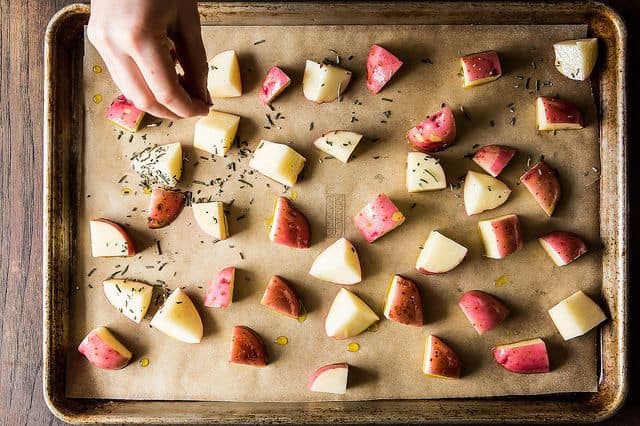
Veggie-Roasting Tip #3: Get Meal-Inspired!
Now that you know a variety of veggies can be roasted and how to do so, it’s time to be inspired with how to include them in your meals. There are many different ways to enjoy:
- As a side dish. Roasted beans, cauliflower or squash are stand-alone side dishes
- Roasted peppers can be used as topping on pizza
- Included in homemade tomato sauces
- Add to soups for an extra dimension of flavour
- Use in cold pasta, quinoa or couscous salads for lunches
- Roasted veggies stuffed in fajitas or tacos
- Include in submarine sandwiches
- Added to risotto
Dietetic Directions’ Recipes with Roasted Fall Veggies:
Roasted Butternut Squash & Chickpea Bowl with Goat Cheese
Crunchy Garlic and Parmesan Asparagus
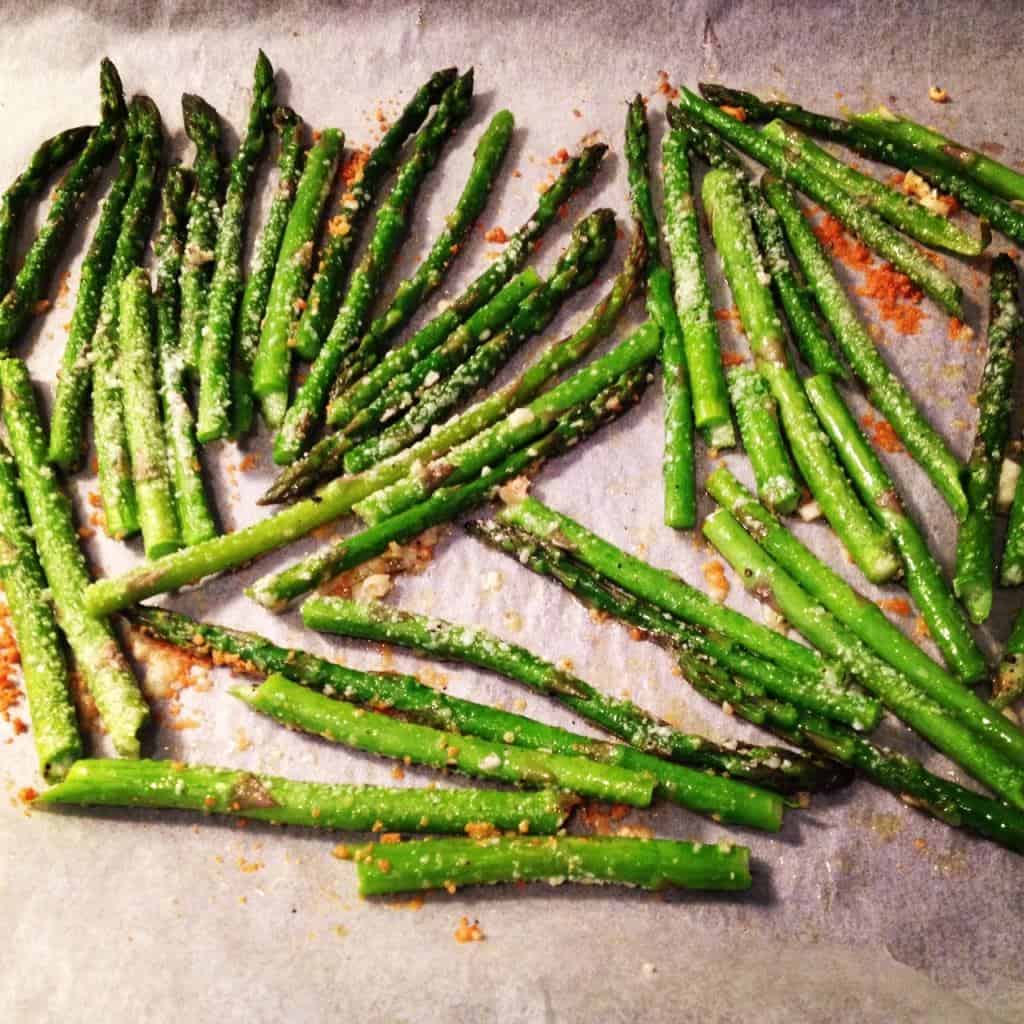
Rosemary Parsnip Fries {3 Ingredients}
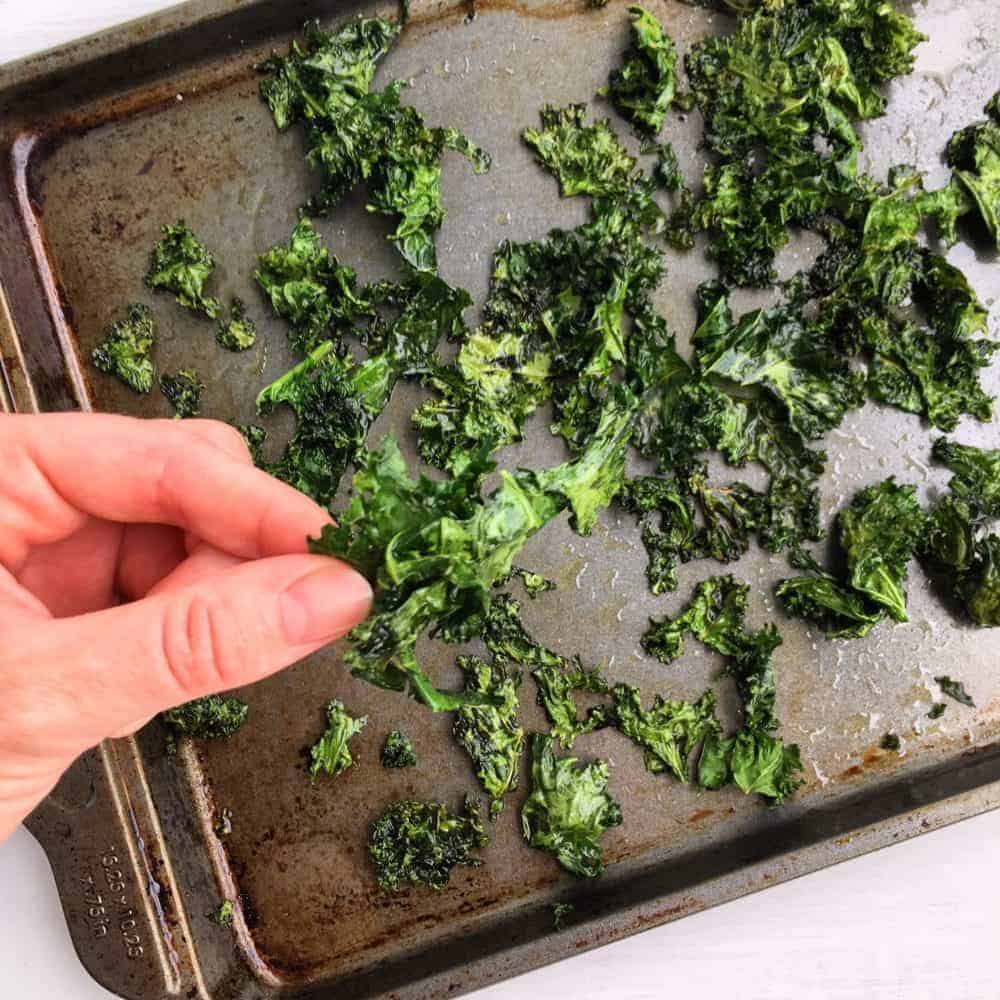
Oven Roasted Oregano Chickpeas
Cinnamon & Spice Sweet Potato Wedges
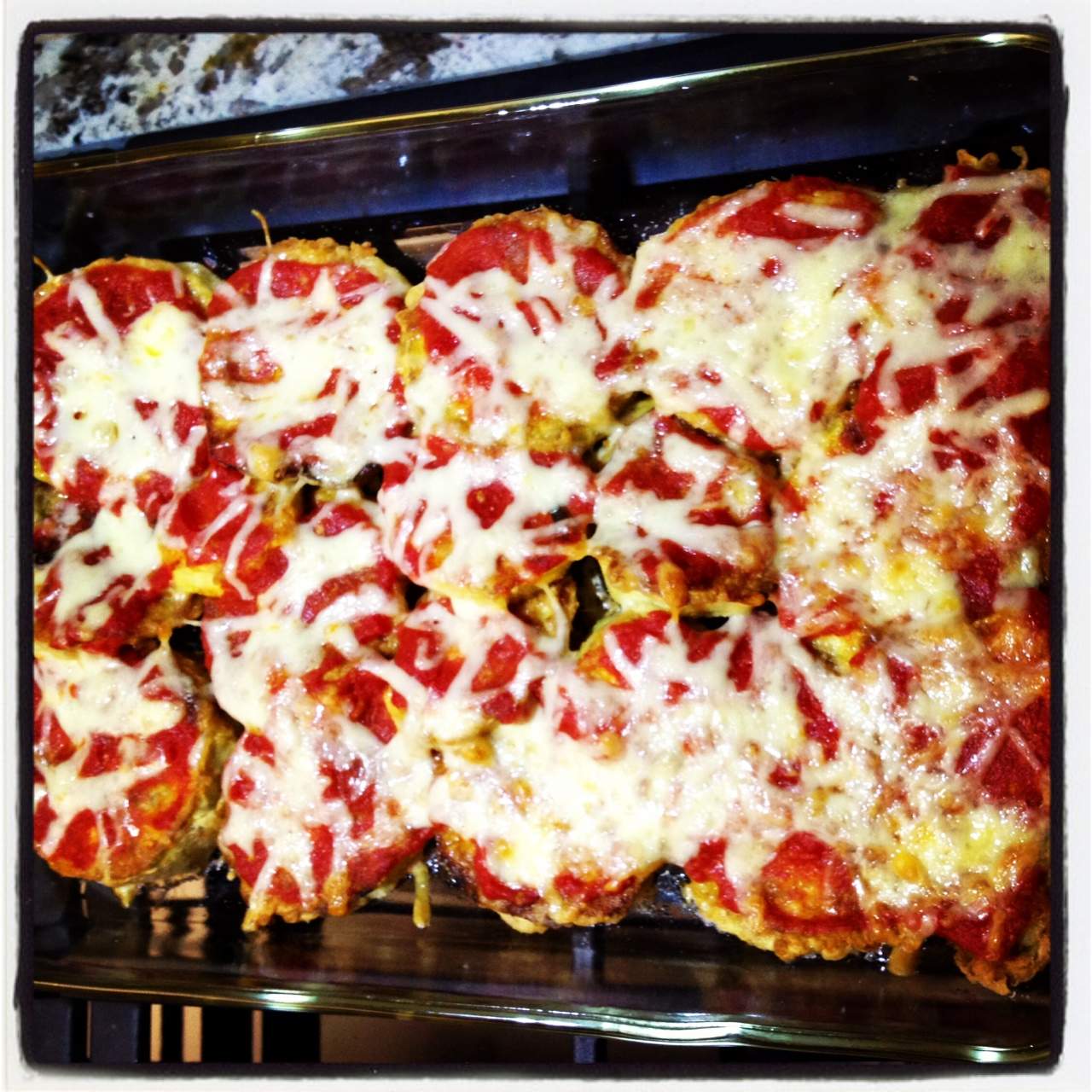
Three Ingredient Roasted Cauliflower
Balsamic & Feta Roasted Winter Veggies
Looking for meal inspiration to roast veggies? Look no further! Share on XBottom Line on Roasted Fall Veggies:
We could all use more veggies in our diets. They are disease fighting, antioxidant-boosting and delicious additions to any meal. This Fall, take advantage of fresh harvest and try roasting veggies for a healthy way to consume those extra vitamins, minerals and antioxidants.


Now it’s your turn! What are your favourite roasted fall veggies? Cool ways that you include them in your meals? Any veggies you have not tried roasting that you’d like to?


